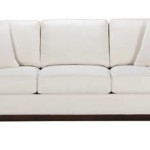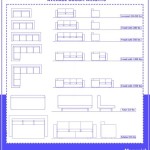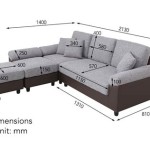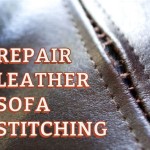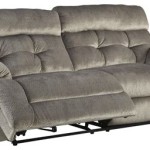How To Refill Sofa Cushions
Over time, sofa cushions lose their resilience and comfort. Refilling them can restore their shape and support, extending the life of the furniture. This process requires careful consideration of cushion type, filling material, and refilling technique.
Assessing Your Cushions
Before starting the refilling process, examine the cushions to determine the type of filling and the overall construction. This assessment will inform the choice of refill material and the best approach to the project.
Types of Cushion Fillings
Various materials provide cushioning in sofas. Identifying the existing filling is crucial for choosing a compatible refill. Common cushion fillings include:
*Foam: Available in various densities, foam offers excellent support and durability. It's a popular choice for high-traffic areas.
*Polyester Fiberfill: This synthetic material provides a softer, plusher feel. It is often used in combination with foam or as a standalone filling in less frequently used furniture.
*Feather and Down: These natural fillings provide luxurious comfort and conform to the body. However, they require regular fluffing and can be more expensive than other options.
*Cotton: A natural fiber filling often used in combination with other materials. It provides a soft, breathable feel.
Gathering Necessary Materials
Once the type of filling is identified, gather the necessary materials for the project. This preparation streamlines the refilling process and minimizes interruptions.
*Refill Material: Purchase the appropriate filling material based on the existing cushion filling and desired comfort level.
*Seam Ripper: A seam ripper is essential for carefully opening the cushion cover.
*Scissors: Sharp scissors are needed to cut the refill material to size.
*Measuring Tape: Precise measurements ensure the correct amount of fill is used.
*Needle and Thread or Sewing Machine: These are needed to close the cushion cover after refilling.
*Stuffing Tool (Optional): This tool can help push the filling into tight corners.
Opening the Cushion Cover
Exercise caution when opening the cushion cover to avoid damaging the fabric. Patience and precision are key to a successful outcome.
*Locate the existing seam on the cushion cover. This is typically along one edge.
*Carefully insert the seam ripper under the stitches and gently break the seam.
*Continue ripping the seam until a sufficient opening is created to access the existing filling.
Removing the Old Filling
The method of removing the old filling will depend on its condition and whether you plan to reuse or replace it. Consider the potential mess and take appropriate precautions.
*If the existing filling is in good condition and you only need to add more, carefully tease it out to assess the quantity and condition.
*If the filling is deteriorated or compressed, remove it entirely and dispose of it properly.
Adding the New Filling
Carefully add the new filling material, distributing it evenly throughout the cushion. Even distribution ensures consistent comfort and support.
*If adding to existing filling, tease the old and new materials together to blend them thoroughly.
*Pay attention to corners and edges, ensuring they are adequately filled.
*Check the cushion's firmness regularly during filling. Add more material as needed to achieve the desired level of support.
Closing the Cushion Cover
Close the cushion cover securely to prevent the filling from escaping. A neat and secure closure maintains the cushion’s appearance and longevity.
*Align the edges of the fabric carefully. Use pins to hold the fabric in place.
*Using a needle and thread or a sewing machine, stitch along the original seam line. Ensure the stitches are strong and evenly spaced.
*For a professional finish, use a hidden stitch or a zipper closure. A zipper provides easier access for future refilling.
Fluffing and Shaping the Cushions
Once refilled, fluff and shape the cushions to ensure even distribution of the filling material. This final step maximizes comfort and restores the cushion's appearance.
*Gently knead and pat the cushions to distribute the filling evenly.
*Shape the cushions to their original form, ensuring they fit snugly back into the sofa frame.
*Regular fluffing will help maintain the cushion's shape and loft over time, especially with down or feather fillings.

How To Stuff Saggy Couch Cushions Under 50 Thetarnishedjewelblog

How To Stuff Saggy Couch Cushions Under 50 Thetarnishedjewelblog

How To Fix Sagging Couch Cushions Thistlewood Farm

Easy Inexpensive Saggy Couch Solutions Diy Makeover Love Of Family Home

Easy Inexpensive Saggy Couch Solutions Diy Makeover Love Of Family Home

How To Restuff Sofa Cushions Plumbs Reupholstery

How To Fix Smashed Couch Cushions Honey We Re Home

How To Fix Sagging Couch Cushions Thistlewood Farm

Sofa Cushion Refilling The Repair Man

How To Restuff Rp Sofa Cushions Easy And Quick On



